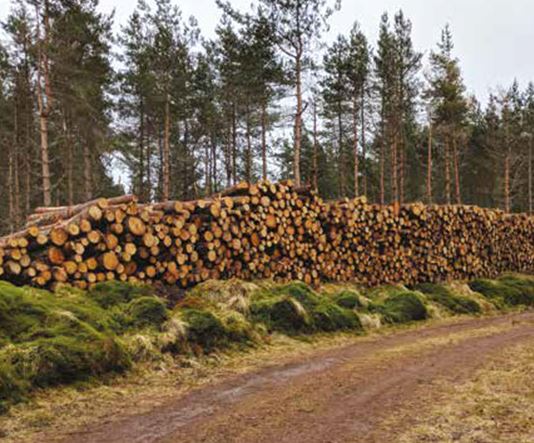FWN38 Autumn 2022 – Timber Market Report June 2022
14 December 2022In our last published Timber Market Report (November 2021), there was an encouraging sense of strong optimism in timber markets, fuelled by a year of record-level standing timber prices, strong demands for materials, and stabilisation of prices at a buoyant level as many mills bought ahead of winter 2021.
From that point in early November 2021, we have seen a winter/spring period like none could have predicted. On the 26th- 27th of November, we saw the catastrophic force of extratropical cyclone Storm Arwen hit the UK with maximum wind gusts of 110 mph. This storm caused extensive damage across the UK, with 3 fatalities recorded, and thousands of homes left without power for weeks after as energy network operators struggled to clear and restore powerlines.
The UK’s timber market was hit hard by this storm, which was one of the biggest windblow events in the UK for the last 3 decades. Storm Arwen was also not alone in causing destruction and loss this winter, as the UK also faced the later storms Corrie, Malik and Eunice – all further adding to the damage started by Storm Arwen. The combined result of these storms was in region of 2 million cubic metres of timber blown over across Scotland and the North of England, and a subsequent near- saturation of the timber market as owners strived to clear and recover their losses in a timely manner. Prices for the whole timber market took a hammering as a result, with all standing product prices almost halving from their original record high figures seen during 2021.
Challenges didn’t stop with the storms this winter though- we’ve also seen record breaking fuel prices affecting all aspects of forestry (but especially harvesting and haulage costs), driven by Russia’s invasion of Ukraine on the 24th of February 2022.
This conflict, and the subsequent sanctions the world has levelled against Russia, has led to hugely volatile trading conditions the world over.
Whilst predicting the market has always been challenging, doing so in the midst of so much market uncertainty is daunting to even contemplate. Ever an optimist, I believe that we have seen the worst of timber price falls in the aftermath of the stormy circumstances faced over the last winter/spring, and we are now starting to see a recovery of standing timber prices as the UK and global markets come to terms with the world we find ourselves within. The flow of timber across the globe has changed dramatically since February, as Russia (an exporter of many timber products) faces harsh global sanctions. Markets most certainly still require timber and demand continues to rise from the housing sector and energy sectors especially. Whilst costs of operations (and inflation) continue to rise, timber prices also continue to recover, leading to the hope that (whilst far from stable) we will see demand (and prices) for domestically sourced timber continue to grow.
Ben Law, SAC Consulting
Sign up to the FAS newsletter
Receive updates on news, events and publications from Scotland’s Farm Advisory Service

